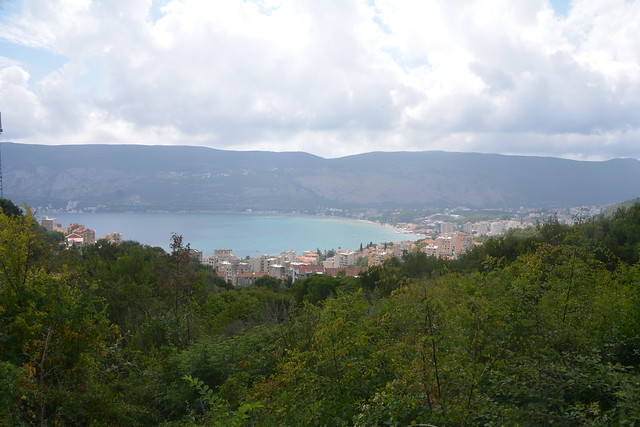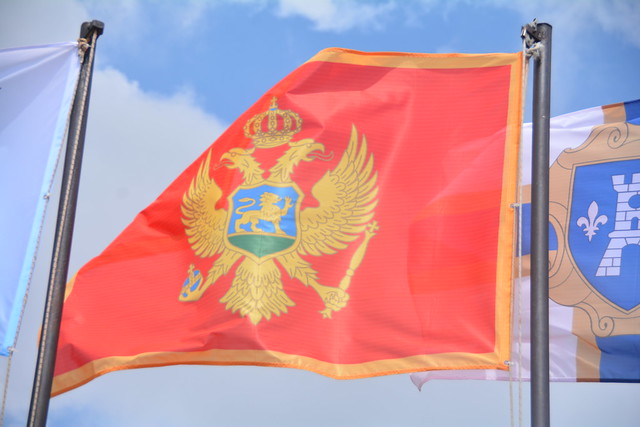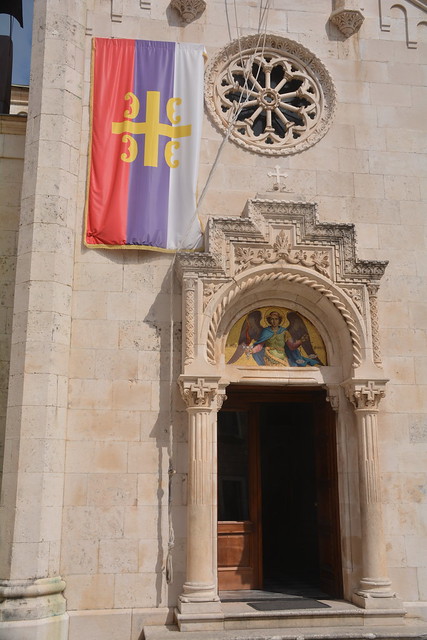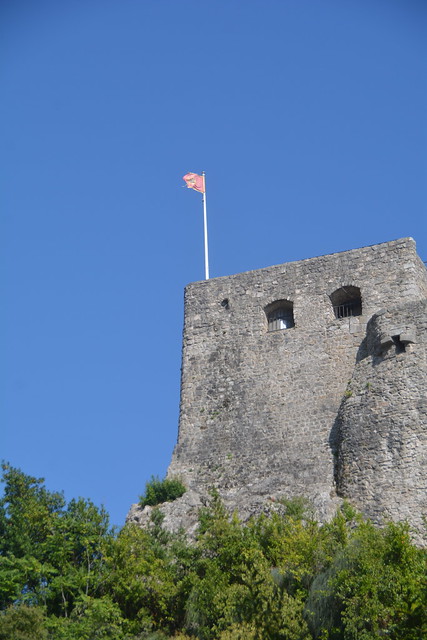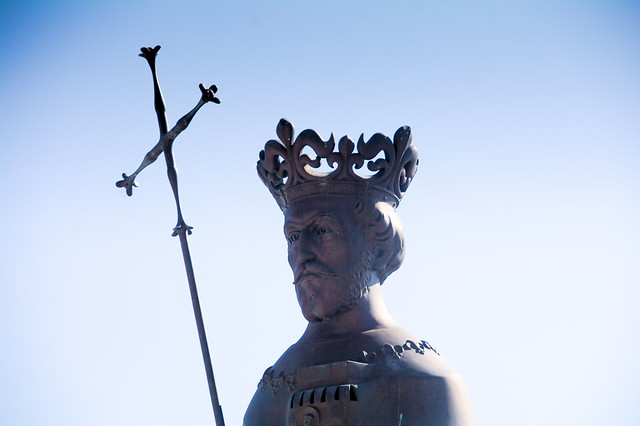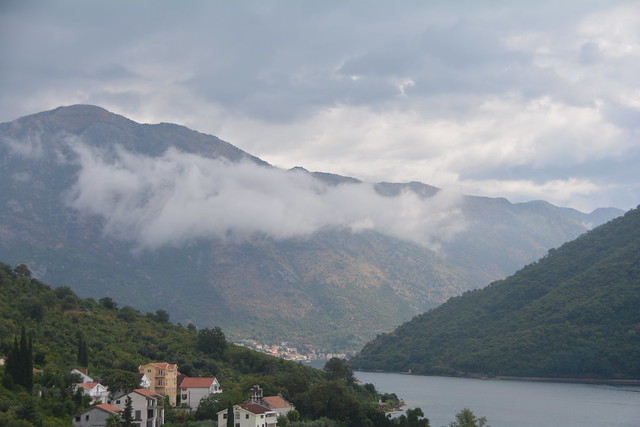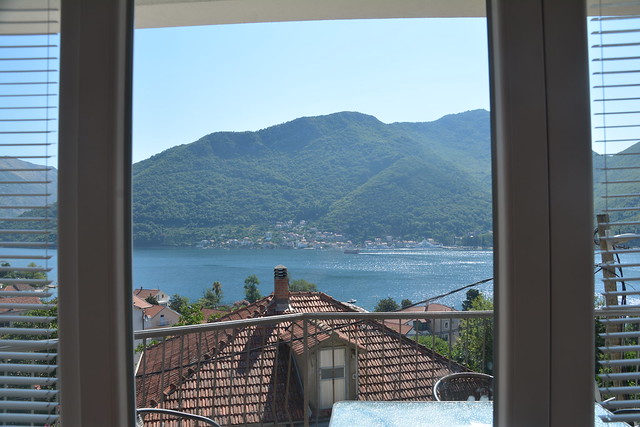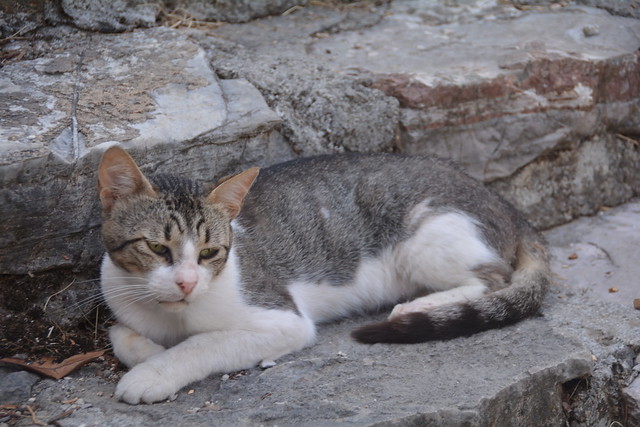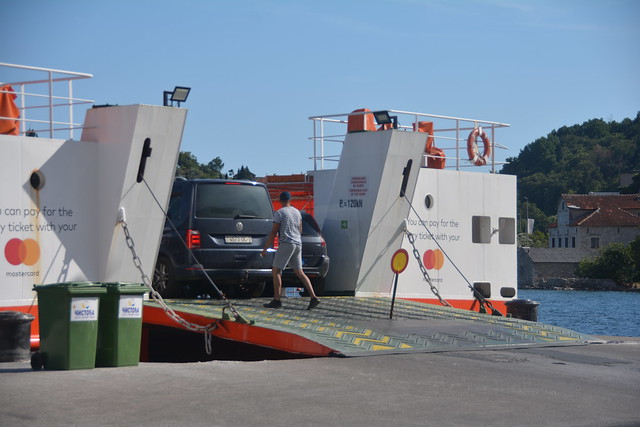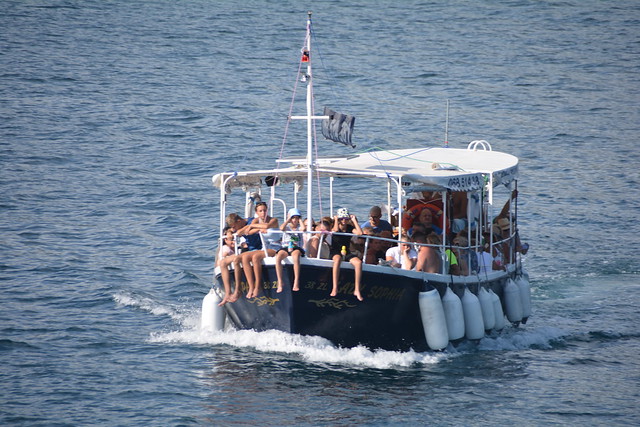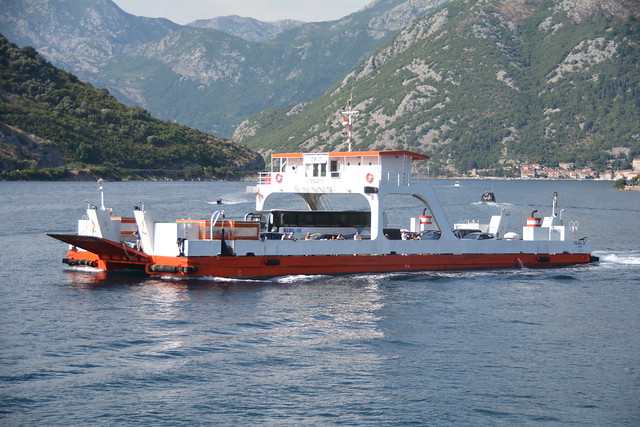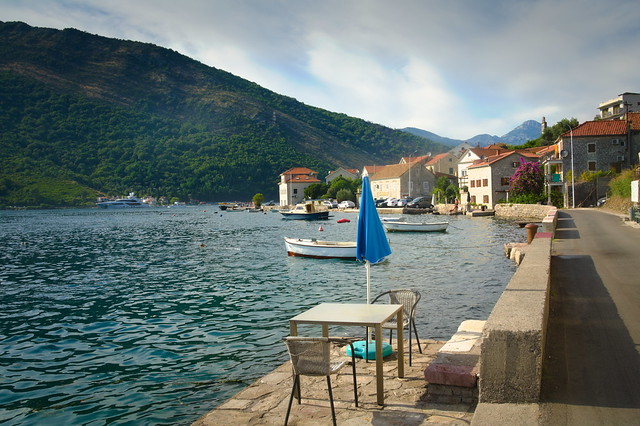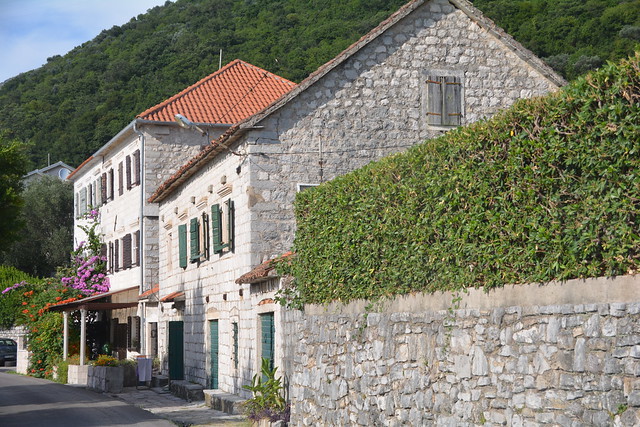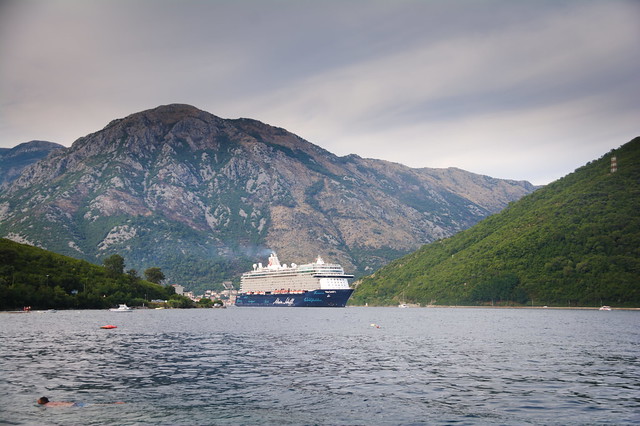As we venture to Montenegro, our last country to visit on this trip, we step outside the EU once more, losing our cell phone roaming privileges and relying on wifi. With no preconceived notions about Montenegro, we eagerly open ourselves to experiencing this tiny country, bordered by Bosnia and Herzegovina to the northwest, Serbia to the northeast, Kosovo to the east, Albania to the southeast, Croatia, and the Adriatic Sea to the southwest. Our journey leads us to the picturesque landscapes of Kotor Bay, where we spend two days in the village of Kamenari and a day trip to Herceg Novi.

History and Religion
Montenegro, known as “Црна Гора” (Crna Gora) in Montenegrin and Serbo-Croatian, is a country with a name dating back to the late 15th century. Its history is shaped by various ruling powers, including the Venetian Republic in the late 14th to late 18th centuries, followed by semi-autonomy under the House of Petrović-Njegoš during Ottoman Empire rule. Since 1516, the country has been led by vladikas (prince-bishops) with both temporal and spiritual roles. In 1697, the Petrović-Njegoš family made the position hereditary, but the crown passed from uncle to nephew due to the bishops’ celibacy requirement. Montenegro gained recognition as an independent nation at the Congress of Berlin in 1878 and became a kingdom in 1910. After World War I, it became part of Yugoslavia, and following the breakup of Yugoslavia, Montenegro declared independence through a referendum in June 2006.
Throughout its rich history, Montenegro has been a crossroads of multiculturalism, fostering a unique coexistence between Muslim and Christian populations. Montenegrins have historically been members of the Serbian Orthodox Church, while Islam is practiced by 19% of the population, making Montenegro one of the European countries with the highest proportion of Muslims. Additionally, over a quarter of the country’s Albanians are Catholics, further reflecting the diverse and harmonious multicultural fabric of Montenegrin society.
Kamenari
Upon reaching Kamenari, our first stop was the beach, where we decided to explore the beach clubs. With a hint of hesitation, I inquired whether the staff spoke English, but my worries were quickly put to rest when they assured me they did. As we looked into the offerings, we were taken aback by the steep prices for sunbeds and umbrellas at the beach clubs and restaurants. The rates ranged from 35 to 60 euros per day for two persons, with a luxury option called a Baldachin costing up to 80 euros.
Surprised by the high costs, we opted for the free beaches instead, where we enjoyed crystal-clear waters and lounged on our towels. As everywhere in the Adriatic, the beach consists of pebbles and not sand.

The disparity in prices extended to everyday items as well; a regular 200-gram chocolate bar cost 2.50 euros in the supermarket, while a Western brand version set us back over 6 euros.
Another encounter arose when we needed to visit a pharmacy. After trying two places without any luck, we finally found an attendant at the third pharmacy who spoke English and provided us with the medicine we needed. While English was commonly spoken in tourist areas, we noticed its limited use outside of these hubs.

In Kamenari, another convenient feature is the ferry service to Lepetani, accommodating cars, buses, and trucks. The best part is that it’s entirely free for foot passengers, making it an ideal choice for our dinner outing. Since the ferry operates 24/7, there’s no need to rush through our meal just to make it back home. We take the ferry to Lepetani and savor a delightful dinner by the seaside, right next to the ferry station at the Amphora Restaurant. The setting adds to the charm of the evening, and we end up returning home late, filled with contentment from our memorable dining experience.
Herceg Novi: A Coastal Montenegrin Town Steeped in History
Herceg Novi, a picturesque coastal town in Montenegro, boasts a rich historical tapestry that dates back centuries. Located at the western entrance to the renowned Bay of Kotor, this enchanting destination has witnessed a remarkable evolution, reflected in its diverse names and cultural influences.

Founded as a fortress in 1382 by the Bosnian King Tvrtko I Kotromanić, the town was initially christened after Saint Stephen. However, the name “Novi,” meaning “New” in several languages, including Italian as “Castelnuovo” and Greek as “Neòkastron,” gained prominence. Turkish influences bestowed the name “Kala-i Novi,” all aptly conveying the concept of a “new castle.”
The town’s current name, Herceg Novi, holds a poignant historical connection to Duke Stjepan Vukčić Kosača, whose title “herceg” is the Serbo-Croatian pronunciation of the German word “herzog,” meaning “duke.” It is worth noting that the name Herzegovina also derives from Stjepan’s title.
Throughout its vibrant past, Herceg Novi experienced shifts in control, serving under the Ottoman Empire from 1482 to 1687, followed by the Republic of Venice from 1687 to 1797. In the late 18th century, the town witnessed annexation by Habsburg Austria in 1798, only to be later ceded to Russia in accordance with the Treaty of Pressburg in 1805. This led to the official Russian occupation of Herceg Novi from 1806 to 1807.
The town’s fortunes took another turn as it was ceded to Napoleon I Bonaparte’s French Empire in 1807 as per the Treaty of Tilsit. The start of French rule commenced on August 12, 1807, following the departure of Russian forces. It was during this period that Herceg Novi was part of Dalmatia until its annexation to the newly created Illyrian Provinces on October 14, 1809.
In 1814, the arrival of Austrian forces led the Prince-Bishop of Montenegro to relinquish the territory, resulting in its incorporation into the Dalmatian crownland. For almost a century, the bay was under Austro-Hungarian control until 1918. Eventually, it became part of the self-proclaimed State of Slovenes, Croats, and Serbs, uniting with Serbia within a month to form the Kingdom of Serbs, Croats, and Slovenes, later renamed Yugoslavia in 1929.
As visitors explore the historic streets of Herceg Novi and soak in the captivating vistas of the Bay of Kotor, they bear witness to the echoes of time etched into the town’s every nook and cranny. Herceg Novi stands as a testament to Montenegro’s enduring heritage and continues to enchant visitors with its beguiling fusion of cultures and history.
Starting Our City Tour: Unveiling Herceg Novi’s Kanli Kula Fortress
Our journey through the coastal town of Herceg Novi began with a visit to Kanli Kula Fortress. This historic site, with its intriguing name of Turkish origin, meaning “bloody tower,” is now an open-air amphitheater that holds significant cultural value in Montenegro. For a fee of 4 Euros per person, we stepped back in time to explore the fortress’s history and admire the breathtaking view it offered.

Constructed by the Turks in 1539, Kanli Kula underwent various repairs and enhancements by the Venetians in 1687 after their conquest of Herceg Novi. While the fortress initially served military purposes, it later transformed into a prison, earning its infamous moniker “Bloody Tower.” However, in 1966, the interior was restored, transforming Kanli Kula into an impressive open-air amphitheater. With a seating capacity of over 1000, the fortress has since become a venue for numerous cultural events and festivals, adding to its charm and significance.
Kanli Kula
Apart from its historical importance, Kanli Kula delighted us with its breathtaking panoramic views of the city and the mesmerizing Adriatic Sea. The sight alone justified our visit.
For those planning a visit, we recommend parking on the main road E65 in front of the fortress and utilizing a taxi for the return journey from the center of the Old City, which proved to be a hassle-free and cost-effective option at just 2.60 Euros.
